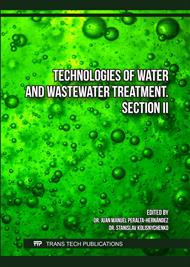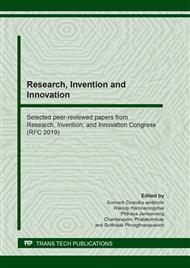p.323
p.331
p.339
p.347
p.354
p.360
p.367
p.376
p.384
Strength and Noise Reduction of Geopolymeric Material Produced from Waste Sludge
Abstract:
This research investigated the use of water treatment sludge (WTS) as an geopolymerized material. WTS with an initial SiO2:Al2O3 ratio of 3.25 was thermally treated at temperatures of 105, 500, 650 and 850 °C for 1 h. The powdered WTS after calcinations was reacted with alkaline-silicate solution (ASS) with different proportion between NaOH and Na2SiO3 solutions. The effect of calcining temperatures on the strength’s development of WTS geopolymer was determined. Without thermal treatment of the WTS, no strength was gained during the early stages. Samples prepared from WTR calcined at 850 °C exhibited the highest strength at all curing times. When WTS geopolymer was prepared as solid plate, the test in noise reduction was explored at various sound frequencies between 1000-10000 Hz. The average noise reduction efficiency of WTS geopolymer was 63.5% closed to the case of commercial light-weight brick at the same paste’s thickness.
Info:
Periodical:
Pages:
354-359
Citation:
Online since:
August 2020
Authors:
Price:
Сopyright:
© 2020 Trans Tech Publications Ltd. All Rights Reserved
Share:
Citation:



